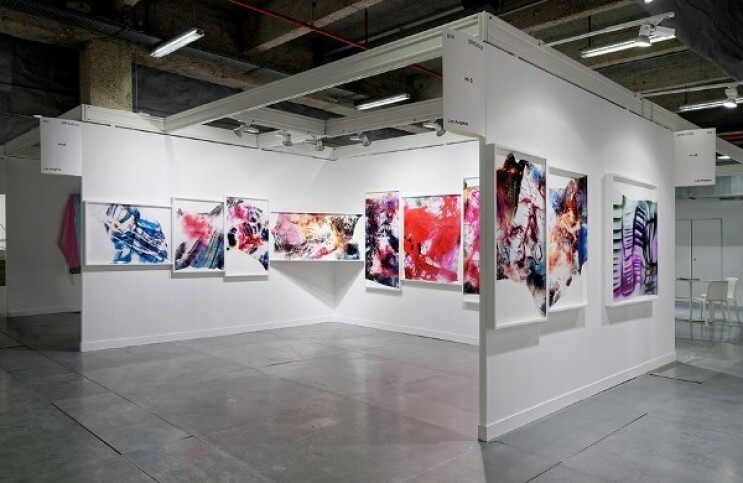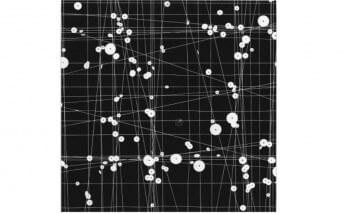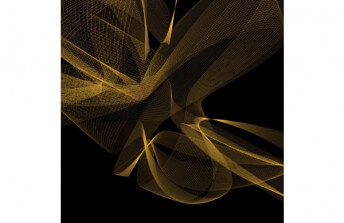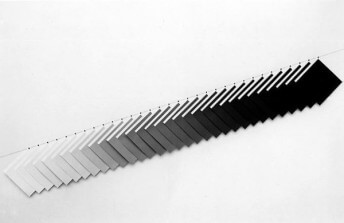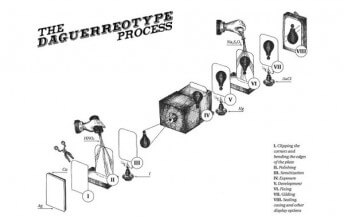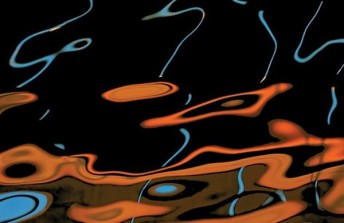Light Meets Chemicals in Mariah Robertson’s Photography
Sep 18, 2017
The work of Mariah Robertson has been described as exciting, extreme, even explosive. One look at her large-scale photo paper roll installations and you will understand why. The work is undeniable. Its colors are fantastically vibrant, its compositions are incomprehensibly complex, and its physical presence is inviting and fresh. Robertson works with photographic mediums—photo paper, chemicals and light—but she no longer uses a camera. She creates compositions on photo paper by first strategically exposing it to light in order to create controlled patterns and shapes, and then by splattering, dripping and hurling assorted chemical cocktails across its surface, letting controlled chaos transform the exposed image in unpredictable ways. Her techniques, and the images that emerge from them, evoke the masters: Helen Frankenthaler, Jackson Pollock, Man Ray. But her vision is idiosyncratic and fresh. I have happily seen the work a few different times, never intentionally, always happening upon it unexpectedly. One word sums up how I felt about it each time: generous. It gave me more to look at than I had time to take in. It left me wishing I could stay longer. It made me look forward to seeing it another time. I cannot imagine any better feeling to receive from doing anything in life than that of hoping one day I get to do it again.
These Are Not Prints
The earliest works I saw by Mariah Robertson were C-prints. They were, for the most part, figurative: photograms featuring layered patterns and spectral images of flowers, interiors, and nude human forms. The compositions were precise and confident, and the imagery contemporary and bold. I could not help but feel drawn into the work. It made me feel something. It was masterful. But for some reason it did not feel precious. This is the odd relationship I have to some printed artworks. No matter how much I love them I know they are one of many. They can be, and in all likelihood have been, done in multiples, all of which are the same. That is not a feeling I have about paintings, or other artworks that cannot be precisely reproduced. And it is an idea I have heard expressed about Andy Warhol prints: the idea that his hand-made process did result in tiny variations, and in those variations the uniqueness, and thus the preciousness of each work can be found.
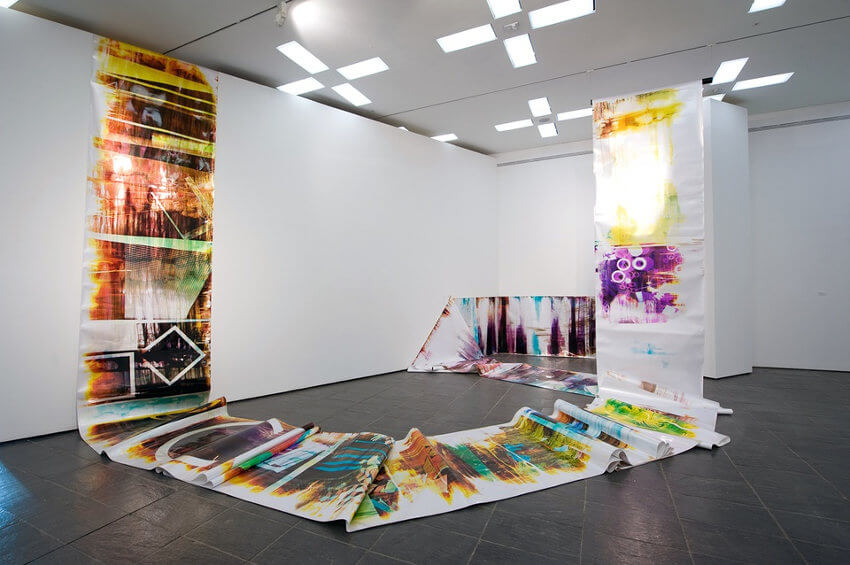 Mariah Robertson - installation view at Baltic Centre for Contemporary Art, UK, 2011
Mariah Robertson - installation view at Baltic Centre for Contemporary Art, UK, 2011
But along the way, Robertson had a revelation. After happening upon a supply of exposed photo paper, she decided that rather than throwing it away she would experiment with it. She used it like a surface to paint on, but instead of using paint, she used mixtures of developer solutions (metol, phenidone, borax, sodium hydroxide, sodium sulfite, etc.), fixer (sodium or ammonium thiosulfate), and water. These are common chemicals found in any darkroom. But rather than keeping the mixtures to normal ratios that yield predictable results, Robertson created toxic cocktails that would have unknown aesthetic effects on the photo paper. She heated the chemicals up, cooled them down, and agitated them, discovering what each new variation yielded in terms of color, viscosity, and interaction with previous layers. Wearing a full hazmat suit to protect her from the potential side effects of her experimentation, she let her imagination run wild. The results are visually stunning, and creatively inspiring. Best of all, each work she creates in this way is unique.
 Mariah Robertson - Chaos Power Center, 11R, New York, 2017, installation view
Mariah Robertson - Chaos Power Center, 11R, New York, 2017, installation view
Hanging in the Balance
Videos of Robertson working show someone ecstatically hanging in the balance between multiple worlds. She embodies a childlike sense of play, splashing deadly chemicals carefree onto paper slung over a trough. At the same time she clearly has a plan: the studio setup is a purposefully engineered one-person factory, which she ingeniously created for this specific purpose. She projects the intensity of an Abstract Expressionist: an artist reaching toward the grand ultimate expression of the primal urge, the ancient dictate to visually manifest the spirit. Simultaneously, she is precise: taping off geometric patterns and shapes, channeling Bridget Riley, Agnes Martin, Josef Albers and so many others who worked with calm exactitude. The balancing act most evident in her process is that between hope and fear. She has a vision and she is speeding toward it, not knowing when to stop or if she has already gone to far. The hope is that she will feel the moment when she has succeeded and intuitively, wisely stop. The fear is that chaos, accidents, misjudgments or mistakes will turn a potential masterwork into mud.
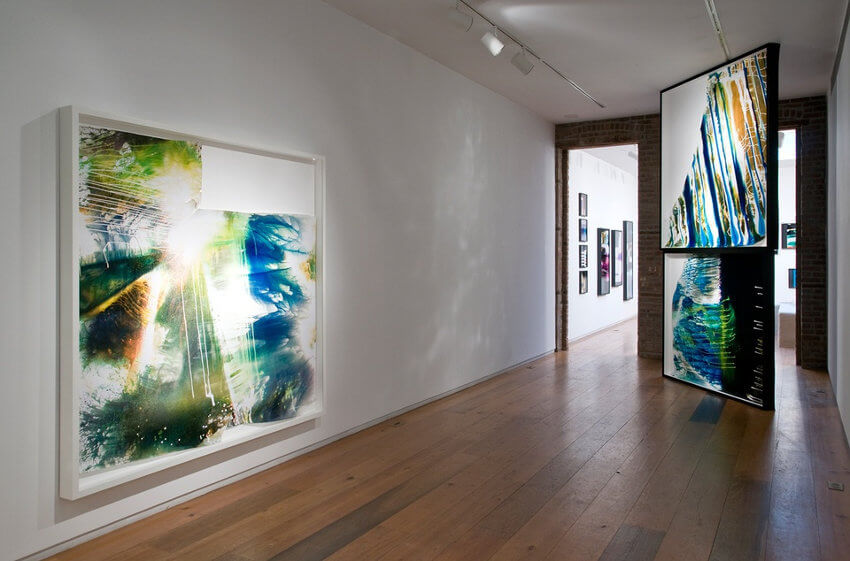 Mariah Robertson - Permanent Puberty, American Contemporary, New York, 2013, installation view
Mariah Robertson - Permanent Puberty, American Contemporary, New York, 2013, installation view
A most eloquent expression of this balance comes through in the monumental rolls Robertson creates. These works came about when she realized that no one any longer produced pre-cut sheets of the type of photo paper she wanted to use. She could only order large rolls that had to be hand-cut. But then it occurred to her: why cut it? Why not use the entire roll as a surface for a large-scale expression of her idea? She has made numerous rolls since. Within each of them dances the entire array of success and failure, planning and chaos, work and play, hope and fear. Imagine the stress of their creation: feeling the thrill of perfection as one section is completed, only to face the crushing disappointment of some unexpected chemical disaster in the next. But the piece cannot be undone. It has to possess both the highs and the lows. Accepting that fact opens Robertson up to the possibility of surprise. And for viewers it welcomes us to the reality that each of us perceives beauty, hope, fear, work, play, success and failure in our own way. As Robertson puts it, the work is a reminder that “All your attempts are going to fail at controlling life. So you should let that go, so you can actually see what’s happening.”
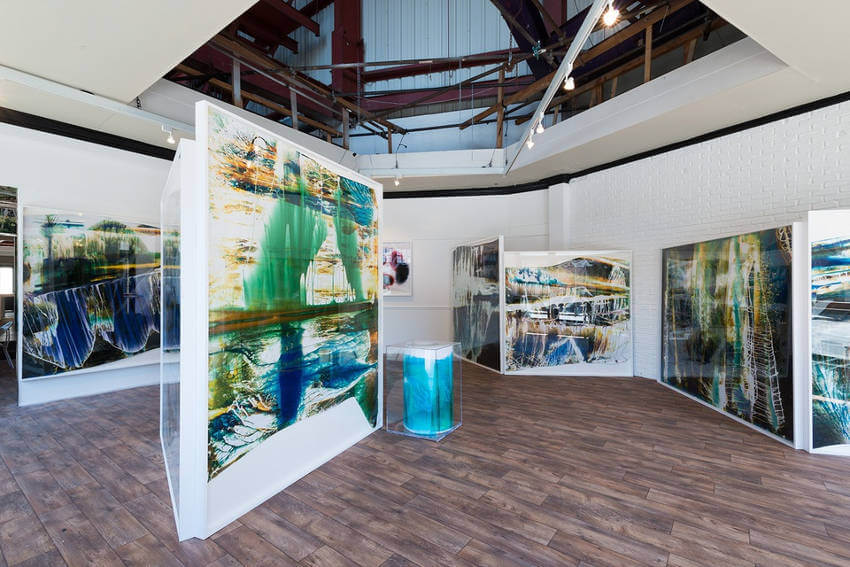 Mariah Robertson - Solo Presentation, Paris Photo Los Angeles, 2014, installation view
Mariah Robertson - Solo Presentation, Paris Photo Los Angeles, 2014, installation view
Featured image: Mariah Robertson - Solo Presentation, FIAC'S (OFF)ICIELLE, Paris, 2015, installation view
All images copyright of the artist and M+B Gallery, all images used for illustrative purposes only
By Phillip Barcio
